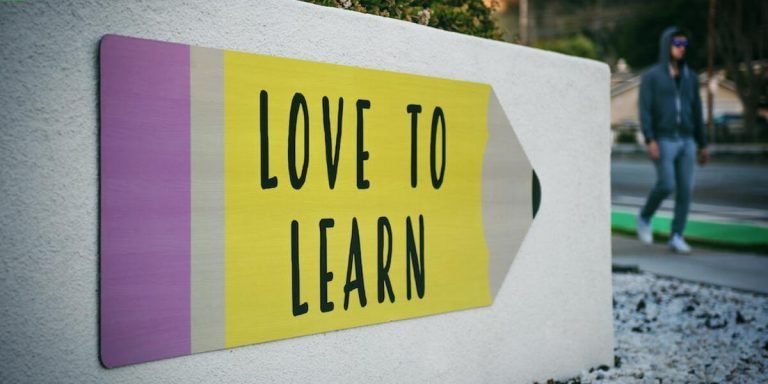Teaching Special Education: A Guide to Understanding Unique Learning Needs
Teaching special education is a unique realm that encompasses various methodologies to cater to different learning needs. It involves specially designed instructions tailored to meet the individualized requirements of students with disabilities. Including educating them in typical classroom settings, it also takes into account other possible setups such as resource rooms and separate classrooms.
This guide aims at empowering parents and educators about “Special Education Resources and Support” which are pivotal elements for successful outcomes in this domain. Adequate resources coupled with robust support systems can significantly enhance the effectiveness of educational strategies employed by special-ed teachers, thus considerably improving student development and progression.
Did you know?
Despite common misconceptions, special education doesn’t always mean a separate classroom. In fact, over 60% of all students with disabilities in the U.S spend more than 80% of their school day in regular classrooms alongside their peers (National Center for Education Statistics).
Understanding the Spectrum of Special Education Resources
As we navigate the sphere of 2023, it’s clear that technology has transformed nearly every aspect of our daily lives – and education is no exception. More so when it comes to teaching special education where a spectrum of resources are now available at hand for both parents and educators alike.
Assessing how these technologies support differentiated learning styles is the first step to understanding this dynamic range. Special Education Resources (SERs) have evolved significantly in recent years, due to advances in technology; they offer a variety of tools specifically designed to help teachers tailor their approach to meet individual student needs.
Tutors can now use tech-based SERs such as interactive software applications and adaptive learning platforms, which provide personalized paths for student academic progression, moving beyond the traditional one-size-fits-all methods.
Moreover, Assistive Technology Devices (ATDs), ranging from simple aids such as text-to-speech converters or alternative keyboards up till more specialized equipment like eye-gaze response systems not only equip differently-abled learners with necessary skills but also foster self-reliance promoting inclusivity within mainstream schooling environment.
In essence, understanding the breadth and depth of current special education resources empowers us all – parents, educators and society at large–to make informed decisions about cultivating supportive educational landscapes catered explicitly towards fostering talents hidden beneath varied spectrums while simultaneously breaking down barriers often associated with disability-led education scenarios.
Types of Educational Tools for Diverse Learning Needs
Diving deep into the world of special education, we quickly realize that teaching children with diverse learning needs is not a single-dimensional task. It embraces an array of resources and strategies designed to foster inclusive environments where every student can thrive.
Original content as is.
This form of technology offers immense benefits when it comes to teaching special education by enhancing cognitive abilities, promoting independence, and fostering engagement in students who face challenges communicating or completing specific tasks without assistance.
From visualizing complex concepts through immersion experiences, AR expands the horizon far beyond bookish knowledge making abstract ideas tangible especially beneficial while dealing with learners facing attention deficit issues or sensory impairments.
Apps like Proloquo2Go function as augmentative communication tool supporting non-verbal students communicate better; other offerings further range from interactive storybooks aiding reading comprehension skills development ,to apps offering math drills thereby making core subjects more approachable .
Navigating Support Services and Accommodations
Special education presents a unique set of opportunities and challenges both for the children involved and their parents or educators. Navigating support services, teaching special education students effectively requires an understanding of the resources available to them.
At the heart of any special educational process is the development of an Individualized Education Program (IEP). This legally binding document outlines individual goals for each student based on his or her specific needs. It provides a roadmap that guides all those engaged in teaching special education with aligning instructional content and strategies to meet these identified targets.
The Individuals with Disabilities Act (IDEA) ensures every child has access to free appropriate public education tailored according to their distinct requirements. Provisions under this law encompass early intervention services from birth through 2 years old, as well as individual specialized instructions within school systems aimed at promoting inclusive learning environments where possible.
While navigating support services, one must understand accommodations versus modifications are different but often used interchangeably. Accommodations alter how students learn while modifications change what they learn—equipping teachers better when drafting IEPs catered particularly towards supporting diverse learners’ inclusion into mainstream classes without diluting academic standards significantly.
Strategies for Effective Communication in Teaching Special Education
As the field of special education continues to evolve in 2023, certain strategies have emerged as effective methods for communication. One such strategy is incorporating technology into learning processes which not only facilitates teaching but greatly enhances students’ engagement and understanding level too.
The integration of technology in education serves a dual purpose: refining teachers’ instruction skills while simultaneously catering to individual student needs that are central to Special Education. For example, interactive software can bring abstract concepts alive making it easier for learners with cognitive difficulties. Meanwhile, assistive technology devices like speech-to-text applications aid those struggling with language or hearing challenges.
Moreover, online platforms offer comprehensive resources and support systems benefiting both educators and parents involved in this sector- from e-books tailored towards different age groups or disabilities-specific helpsheets. These digital tools could act as instructors’ assistants by offering personalized lesson plans built on each pupil’s unique abilities thus promoting inclusion on a whole new level.
One important feature about these technological advancements is their adaptability factor considering the diverse range of physical and cognitive impairments among special need learners than mainstream counterparts – ensuring everyone has equal access to quality education regardless situation or location. By harnessing innovative tech trends effectively within teaching methodologies we’re essentially embracing educational inclusivity at its finest stirring newer hope paths towards brighter futures ahead.
Adapting Instructional Methods to Enhance Student Engagement
To foster an inclusive learning environment when teaching special education, adaptation of instructional methods is crucial. In 2023, more than ever before, technology integration in education presents innovative ways for educators to enhance student engagement.
One effective method is digital gamification. Games capture children’s natural drive for exploration and problem-solving; this inherent motivation can be harnessed into learning activities particularly designed for students with unique needs. Resources like Prodigy Math Game or Code.org offer a variety of levels so that each child finds challenging yet achievable tasks.
Making instruction visual also improves comprehension significantly – especially beneficial when teaching special education where students might struggle with processing textual information alone. Utilizing tech tools such as interactive whiteboards or slide presentations packed with visuals not only aids understanding but bolsters retention too.
Integrating audio-visual materials within lesson plans bring even greater benefits by catering simultaneously to auditory and visual learners amongst your students. Teachers can pull from vast online repositories including YouTube EDU and PBS LearningMedia hosting educational videos that cover diverse subjects spectacularly well.
Creating personalised learning experiences helps engage all learners regardless of their abilities or disabilities further bolstering inclusivity.
Lastly, the incorporation of assistive technologies proves invaluable in enhancing accessibility which ultimately boosts participation rates among pupils requiring special support.
Implementing Assistive Technology in the Classroom
Implementing assistive technology in the classroom is a pivotal aspect of teaching special education. These tools play a significant role in creating an environment that not only fosters learning but also ensures inclusivity.
Assistive technology can be as basic as simple audio enhancements or more complex systems like Braille writers for visually impaired students. The deciding factor here should always be the needs and preferences of your individual student, keeping them at the center of this inclusion process.
One way to integrate such technologies into classrooms effectively is through dedicated tech training sessions. By doing so, educators can ensure they’re fully comfortable with these devices before deploying them to their learners; eliminating any potential roadblocks in usage due to unfamiliarity.
Another strategy lies within proper research and planning. Ensuring you have evaluated all available options would enable you select those most suited for your specific class group’s unique requirements – making it easier for each child while simultaneously giving parents peace-of-mind knowing their children are receiving optimal support during school hours.
It’s worth noting how important it has become over time on continuing professional development programs which include regular updates about new emerging trends when considering integration strategies! Therefore consider enrolling onto various courses developed specifically around effective use (and management) related tools whilst covering different techniques applicable across diverse settings including home-based ones too!
Collaborative Approaches to Building a Supportive Learning Environment
In the realm of special education, there’s no denying that we’ve seen a dramatic shift in teaching methodologies over recent years. The once heavily relied upon traditional approaches have been swapped for innovative, contemporary techniques centered around collaborative efforts. One such method is crafting a supportive learning environment tailored to meet the unique demands and challenges of educating students with varying abilities.
The integration of technology has undeniably revolutionized this area by creating endless possibilities in terms of resources and support available at educators’ disposal. From universally designed digital materials capable of being personalized to each student’s learning style or need to assistive technologies fostering autonomy among learners; tech-driven tools are aiding significantly in lessening educational disparities while still providing essential specialized interventions.
Moreover, collaboration goes beyond classrooms walls as it increasingly involves parents, specialists and therapists who otherwise would not be involved directly within classroom settings but offer an indispensable wealth of knowledge about how best to facilitate individual growth amid diversity. Thus, coupled with technology advancements like cloud-based platforms enabling real-time communication between all parties involved makes inclusive education not just feasible but very effective now than ever before.
Empowering every learner through targeted specialty aids combined with adoption modern pedagogical models paints an optimistic picture moving forward into 2023 both for special needs children everywhere along their respective academic journeys as well parents/educators striving tirelessly on these often challenging paths towards inclusivity excellence within our schools today!
Fostering Inclusive Practices Among Educators and Staff
In striving to create an inclusive and supportive learning environment, it’s crucial for educators and staff members alike to embrace collaborative practices. In the context of teaching special education in 2023, this essentially means working together towards integrating modern technologies into various aspects of educational initiatives.
One key area where technology holds immense potential is in accessibility. Digital tools can make learning more accessible for students with varied physical or cognitive challenges: from text-to-speech capabilities that help visually impaired students engage with content, to virtual reality devices that provide immersive experiences aiding those struggling with attention disorders.
Furthermore, real-time data analysis enabled by advanced algorithms offers a unique advantage within the sphere of special education resources and support. It facilitates individualized instruction suited specifically for each student’s needs – basing instructional changes on accurate evaluations rather than guesswork or generalizations.
Communication between teachers themselves also gets enhanced through digital methods like online platforms facilitating discussion forums & resource sharing portals – providing opportunities for brainstorming innovative strategies suitable particularly when handling complex cases involved while teaching special education classes.
Lastly but importantly within such fast-paced tech-integrated environments mustn’t let us overlook training our instructors necessarily – as understanding how effectively they can leverage these novel technological advancements may very well determine their ability to succeed at fostering inclusivity efficiently amidst today’s classrooms!
Engaging Families and Caregivers as Partners in Education
Education technology tools can foster collaboration between educators and parents or guardians in several ways.
1) Improved Communication: Parents and teachers can use various interactive platforms that allow real-time communication about student progress. This continuous touch-point means everyone stays updated on the achievements, challenges, or areas requiring attention.
2) Accessible Resources: Digital resources like videos or online modules offer practical support materials specifically designed for educating children with different abilities at home.
3) Customizable Learning Techniques: Technology enables tailored learning techniques based on each child’s unique needs. Teachers are empowered to share personalized strategies using virtual classrooms; these may be easier for caregivers to implement while helping their kids learn.
4a) Online Training Sessions For Family Members – These could provide necessary guidance regarding how best they can assist during homework hours.
5b) Virtual Counseling Services – Families often need emotional support while dealing with students’ specific educational requirements due to physical impairments or other health-related issues.
In conclusion, by integrating targeted technological tools into your approach towards teaching special education students you’re not only improving individualized instruction but also fostering greater cooperation among all stakeholders involved- most importantly involving families more effectively.
Conclusion
In conclusion, “teaching special education” doesn’t have to feel like navigating uncharted territories. With patience, understanding and the right approach tailored for each child’s unique needs, you will not only make an enormous difference in their educational journeys but also enrich your own personal development as a parent or educator. Remember that every challenge faced is an opportunity for growth – both yours and theirs.
We encourage you to take this knowledge forward into your daily interactions with children who require those extra strides in learning. Venture deeper into our website; it holds many more insights on educating all types of learners plus resources extending support specifically for parents and educators alike. Your quest towards ensuring quality education does not end here!
Keep exploring, keep enlightening yourself because when it comes down to shaping young minds – every bit makes a significant impact!







